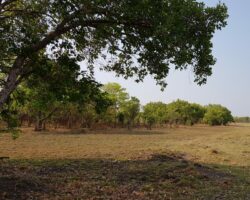Sustainable Forest Management (SFM) is a core pillar of Forest Management activities and ties into all other forest-related thematic areas. It calls for a balance between the resource needs of society and the preservation of forest ecosystems and biodiversity. SFM covers seven common thematic areas including: extent of forest resources, biological diversity, forest health and vitality, productive functions of forest resources, protective functions of forest resources, socio-economic functions, and legal and policy frameworks. These seven areas can be summarised into three primary pillars; Social, Environmental and Economic. The key challenge for many governments is the balance of all three pillars. Assessing progress on SFM is relevant as part of the ‘+’ in REDD+, and for the Sustainable Development Goals (SDGs), along with other national objectives such as ensuring protected areas are functioning sustainably.
The EO4SD Forest Management cluster provides the geo-spatial data which can support SFM monitoring objectives. This data can identify forest changes, track logging activities and its effects on degradation and biomass, and monitor forest health and vitality as well as the productive function of the forest resources. Currently a number of global forest change and biomass products are available, however using these global products for national or subnational monitoring remains a challenge due to a lack of calibration of the global products to local contexts and applications. Integrating ground plot and logging data can be a useful approach to enable wall-to-wall mapping of forest disturbances and of biomass resources using locally-calibrated earth observation datasets. This approach will be demonstrated as part of the project activities.




